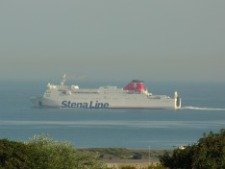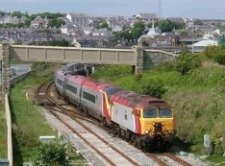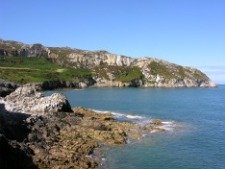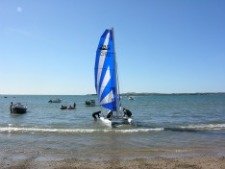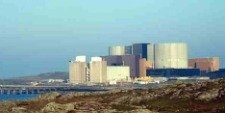|
Menai Suspension Bridge Video, Anglesey
We hope you enjoy this video clip of the Menai Suspension Bridge across the Menai Straits on Anglesey.
In July 2007 the people of Anglesey celebrated the 250th anniversary of Thomas Telford, who built this famous road crossing to the island. It is difficult to estimate the enormity of the task facing Telford and his engineers as they planned what was a bold feat of engineering and a novel construction for its day, across what is a very tidal stretch of water.
A step back in time will suggest that Menai Bridge was a Roman settlement and that this part of the straits was used as a crossing as it is where the island and mainland are nearest. There was also a crossing further north which was used centuries ago by monks visiting the Augustinian Priory at Penmon, where they crossed the Lavan sands north of Bangor at low water and made for the shore at Llanfaes, north of Beaumaris on Anglesey. So how did Telford come to be commissioned with the task of constructing such an impressive bridge in the early nineteenth century? The Act of Union between Britain and Ireland in 1800 lead to the need for far more efficient links between London and the Irish capital, Dublin. We only have to recall the story of the composer Handel trying to get over to Dublin from Holyhead in 1742 to realise how difficult travel was between England and Ireland. With a sea route established across the Irish Sea and a port at Holyhead, the missing link was an improved crossing to the island of Anglesey. Political pressure was applied in the right places so that planning and designing the crossing could begin. Work began on the bridge in 1819, with the two massive landmark towers being constructed from Penmon limestone. While the bridge was originally supported by 16 huge wrought iron chain cables that reached across the 175 metres of expanse, they had to be replaced by steel cables just before the Second World War. Just stop to think how travel has changed enormously since the times before this bridge was built. Prior to 1826 a journey from London to Holyhead would take around 36 hours, and the opening of the Menai Suspension Bridge reduced that to a mere 27 hours. Today you can get from London to Holyhead by road in about 6 hours or so, thanks to a combination of motorway, internal combustion engine and Thomas Telford's bridge across the Menai Strait.
A number of celebrations were held both in the town of Menai Bridge and in Holyhead as well as across North Wales in 2007 to commemorate this feat, and the 250th anniversary of the great man. The local community of Menai Bridge held a number of events to mark this important milestone.
Now you can keep up with the latest local news, articles and videos by getting your free Anglesey Today Newsletter. Just complete the simple form below> It's as easy as 1-2-3! Looking south west from the bridge and down from the walkway you can see how the strong tidal waters of the Menai Straits flow down towards the Britannia Bridge and then on to the Caernarfon bar and the open sea.
On the Anglesey Coastal path to the south is the old Indefatigable School just beyond the Britannia Bridge road and rail crossing.
It was only about 18 months ago that contractors renewed the paintwork on the iron railings and massive chain supports, which inevitably are vulnerable to weathering over time. We remember crossing the Menai Suspension bridge with sections sealed off while the workers sandblasted the metal before applying new coats of paint. So it is fitting that the bridge is in good shape to welcome in the 250th anniversary of Thomas Telford.
Return to Anglesey Coastal Path |








